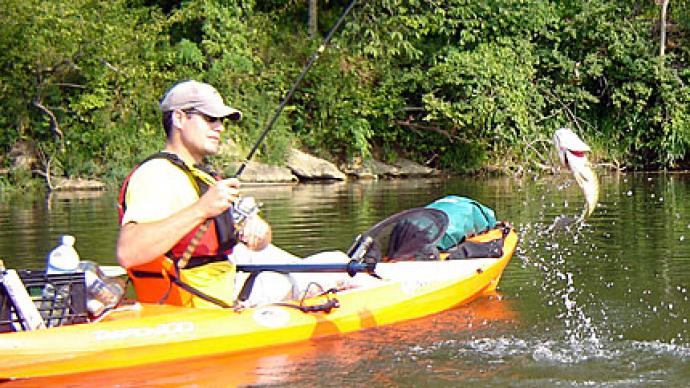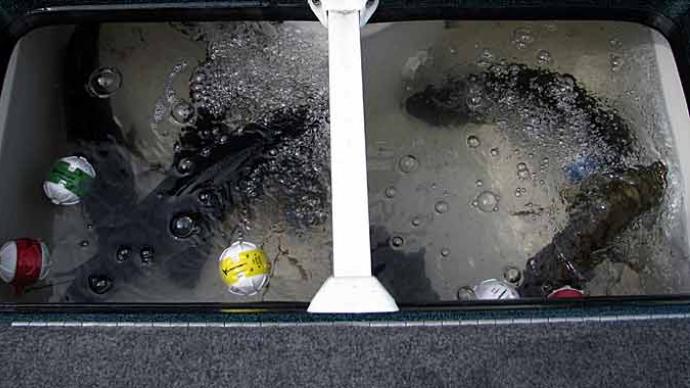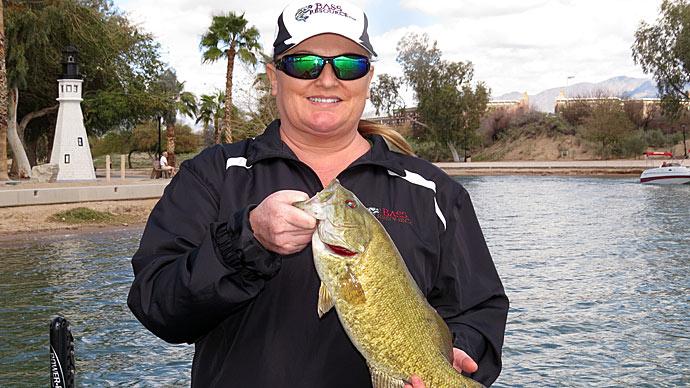
It's that big summertime mega-dollar tournament at your favorite desert lake. You've got 15 pounds in the livewell, and you're feeling pretty good about your chances to take home a new boat and a fat paycheck. Weigh-in time is rapidly approaching, and you decide to give your catch one last look before you crank up the motor and head in to bask in the accolades of your fellow anglers. You crack the livewell lid, glance inside, and much to your horror, you spy five bass floating belly up with zero gill movement. Is this a bad dream or the makings of a sadistic Outdoor Network movie? Not likely, but it can put a serious damper on what was about to have been a great day on the water.
Since catch and release has become the standard modus operandi for the bulk of the bass fishing community, reducing bass mortality has become a topic of interest among anglers. Bass anglers must ensure they release healthy fish and don't waste the resource. Tournament anglers have an additional incentive, as a dead fish weight penalty can mean a difference of thousands of dollars at the end of the day.
Handling
With a few exceptions, Bass are the ultimate predator in their environment. Once they are hooked, they put up the fight of their lives to escape. Some unknown force is pulling them out of their surroundings, and they are using every ounce of energy to prevent it from happening. As a result, when the fish is boated, it is not only exhausted but also under tremendous stress.
Fortunately, in most tournament situations, the amount of handling is minimal. Bass are quickly unhooked and placed in a livewell. Recreational anglers who take photos before release are not as conscientious. To help keep the bass healthy, immediately place the fish in the livewell until you get your boat positioned, tackle stowed, camera ready, and photo angles worked out. Once you are ready to "Vogue," remove the fish from the livewell and prepare to become a supermodel. Release the bass as quickly as possible afterward.
Another major handling issue involves fish contact with the deck. This is sometimes difficult to avoid. Bass have a thin, protective slime coating over their bodies, shielding them from harmful bacteria and parasites. This slime coat gets removed through contact with hands, boat decks, and fish rags. In addition, boat decks are usually relatively hot and can burn the fish's side. Many times the bass is not flopping because it's trying to get away. It's flopping because it's getting too hot.
The optimal solution is to net the fish and remove the hook while the bass is still in the net. If you are fishing alone, fold down the front or rear boat seat and sit on the net handle while you remove the hook. Grab the fish by the lower jaw, not the gills, and place it in the livewell or back in the lake.
Livewell Care
The three enemies of a bass held in livewells are oxygen levels, water temperature, and water Ph. Most modern bass boats have livewells that circulate outside water to help mitigate the problem of oxygen levels. Boats with a cooler style livewell or utilizing a closed circuit circulation system may need to add oxygen tablets to ensure that fish get an adequate amount of dissolved oxygen in the water. The second problem is water temperature. Even when the surface temperature is 74 degrees, the fish stored in the livewell may have come out of 15 feet of water, where temperatures could be several degrees cooler than livewell — surface — water, imagine jogging for a few miles, coming home, and jumping in the Jacuzzi. This is what it feels like to a bass that has just put up the struggle of its life and has been thrown in a livewell filled with surface temperature water. This situation is further exacerbated when fishing desert lakes in the summertime. During the warmer months, put a block of ice in the boat's cooler. When a fish goes to the livewell, split the block into chunks and place some in each of the livewells with the fish. This cools the incoming water to a more tolerable level and helps calm the fish. One caution here is not to lower the temperature of the livewell by more than 10 degrees. Any abrupt temperature change, either up or down, can hurt the fish. Several inexpensive temperature gauges work well for monitoring livewell temperatures.
The final issue of bass holding systems involves the Ph levels of the water inside your livewell. Fish are being placed into water that has likely been pumped from the transom, through a bilge pump and PVC hoses, and into a plastic tank. Cleaning solutions and petroleum-based chemicals come into contact with the water the fish is destined to swim in until released.
Several catch-and-release products offered on the market are ideally suited for bass anglers. I use a product called Please Release Me from Sure Life. This is a granular additive you place in your livewell serving several functions. It acts as a tranquilizer to calm the fish, helps protect and rebuild their slime coat, and also controls the Ph level of the water by reducing the amount of chlorine in the livewell. Follow the instructions on the amount to add to your livewell. I once added too much and thought I killed my fish — I think I got them looped, though, as they were fighting healthy when it came to weigh-in time.
Deep Water Bass
Like humans, bass can suffer from a condition similar to the "bends" when they ascend more rapidly than their air bladders can compensate. This scenario can present itself with any fish caught from depths of 20 feet or more and is most common with winter and summertime bass caught out of deep water.
Typical symptoms are fish that float belly up in the livewell and fan their pectoral fins rapidly in an attempt to right themselves. This can be fatal to the fish if corrective actions are not taken.
As humans do not have a gas bladder, the only way to alleviate the bends is via a decompression chamber or by descending back into the water to the original depth from which the initial ascent occurred, remaining there for an extended period. Bass do not have this luxury. A belly-up bass released in this condition is, more likely than not, a dead fish swimming. Its only hope is through human intervention.
Anglers who keep fish for tournament purposes can deflate the gas bladder using a 2-inch small-gauge hypodermic needle to deflate the gas build-up. Draw an imaginary line from the split in the two top dorsal fins to the anal opening. At the intersection of this line and the lateral line, move down four rows of scales and insert the needle at a 45- degree angle towards the head of the fish. The bladder will deflate when you hear a small hiss coming out of the needle.
For anglers who are not adept with on-the-water phlebotomy or are uncertain how to deflate a fish properly, an alternative method for releasing fish with expanded air bladders involves using a large weighted wire fish basket. Weight the bottom of the basket with a few 2 1/2-pound dive weights and permanently remove the bottom trap door. Tie a 50-foot rope to the handle and place the basket in the water. As the fish will float, open the top trap door on the basket and place the fish in. Lower the basket to depth and let it sit for one minute. Pull the basket up slowly, and the fish will be gone, as it will have had time to re-equalize the pressure in its gas bladder and swim off.
Mortally Wounded Fish
Although this is a more frequent problem with bait anglers, anyone who has fished long enough will run into a situation in which a fish gets deeply hooked on artificial bait and is bleeding profusely. The fish may be moving around quite well, but the odds are that the bass is not going to make it. In non-tournament situations, the responsible thing is to keep the fish instead of releasing it and ultimately wasting the resource. Even if you don't want to keep the fish, you can easily give it away to someone at the launch ramp and simultaneously make their day.
The key to limiting bass mortality is responsible anglers. Understand the problems and have ready solutions available. A needle, oxygen pellets, and a livewell additive should be essential in any angler's boat. These precautions won't turn your dream tournament into a dead-fish nightmare if followed.
Reprinted with permission from Bass West Magazine



